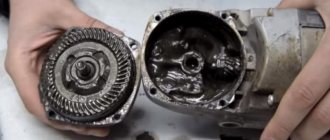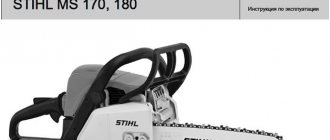Features of a hand plane
The product is intended for planing and processing wooden parts so that the base takes on different shapes. When carrying out manipulations, it is possible to get rid of various imperfections, roughness and different types of defects.
The design of the plane consists of the following elements:
- Compact body. It is made of dense wood or lightweight metal. Outwardly, it resembles a shoe with an iron sole;
- Sharp knife made of steel. This part belongs to the main cutting part of the tool;
- Wedge;
- Handle. It provides the ability to maneuver around the wood piece.
At the heart of this product there is a chisel. It is made in the form of a rectangular element that looks like a plate with sharp ends. The iron part is placed in the armhole area of the wooden frame at a certain angle. Using the regulator, you can set the cutting part at the desired distance.
This manipulation will ensure the desired depth of the future cut and control the volume of chips. The tool has a knife sharpened at an angle of 50 degrees. Professional craftsmen prefer to sharpen the cutter.
Another main element in the design of a plane is the handle. The manual design model contains two elements. One acts as the main guide line and the other for support.
The guide handle part is a curved design. The thrust part helps to create the desired level of pressure during plumbing work.
The body of the product is decorated with a smooth surface, in the lower part of which there is a sharp cutter. The sole part must be level. This way the tool will slide on the wooden base without much effort.
Most craftsmen prefer to use wooden planes, the cost of which is lower than that of professional models.
How to choose the right tool
Now you know what types of planes there are and their purpose. But deciding which tool is better is not as difficult as it seems at first. Manual planing tools are fairly simple designs where the main elements are in plain sight. To choose a durable and high-quality plane, wood professionals recommend paying
attention to three main points:
- Sole. There should be no visible damage or chips on it, the surface should be without geometrical violations, smooth. The only exception will be planes for figure cutting, where the stepped sole is initially already provided for by the design features.
- Knife . It is worth giving preference to tool steel, which is able to perfectly maintain the sharpening angle and is not subject to mechanical types of damage and wear. For factory planes, the blade must be well attached to the body and in no case should it play.
- Handle . Here you should focus mostly on individual sensations, because the instrument must lie comfortably in your hand, since otherwise it will be difficult and inconvenient to work with it.
If we are talking about manufacturers, then when choosing hand planes you should pay attention to products from the company Sigma and Stanley. Among electric tools, Makita and Bosch deserve places in the TOP of the best manufacturers.
Types of planes
This tool model is used for working with wood.
Products are divided into several categories:
- Finish model The product allows you to eliminate knots and minor defects on the surface of a wooden block;
- Curly types. They are used for wood cutting. Thanks to this tool, the wooden base acquires streamlined lines, turns and clear edges;
- Rough processing. Such products have the same operating principle as finishing. The plane model removes coarse bark and small knots;
- Sander. This type of tool is used for finishing the surface of wood. The product gently removes the top layer of wood fibers. This product is based on two sharp knives. The sharpening angle of the parts varies from 50 to 60 degrees. In addition, there is a chipbreaker;
- Zinubel. The device is also used for finishing wood base. It provides a rough structure, which provides better adhesion of the varnish composition to the wood. The cutting parts in the tool are fixed at an angle of 80. Their design has grooves;
- End plane. It is a compact product that is often used for processing small wooden parts;
- Single. It is chosen for repeated wood treatments. If the manipulation is performed correctly, it is possible to obtain even chips without small creases. Chips and scuffs appear on the surface. Such a tool is chosen for performing figured cutting;
- Double. Its design includes a cutter and a chipbreaker. The advantage of such a product is the high quality of the result.
Description
The standard type of planes as such is slowly being replaced by more modern counterparts that have electric motors and allow for faster mass production of products. Today, automatic devices rule the roost, but if the goal is to build a chair in a garage, then a mechanical version of the tool, the main structure of which is made of a block, a wedge and a cutting knife (iron), can handle this.
Depending on the additional elements and the task at hand, the tool is divided into several types of planes, sorted by purpose. Mechanical options are made mainly from combinations of metal and plastic, and in terms of functionality they differ only in the strength of the material used in the base.
Metal plane
Electric ones are equipped with a motor that provides greater speed in completing the task. One of the most popular in today's economy are planes for woodworking.
Types of planes for figure cutting
Models that allow the execution of complex geometric elements are considered a separate category of tools for wood.
Externally, such devices are no different from the classic planer model, but they have their own distinctive characteristics.
They are divided into:
Zenzubel
The tool consists of 2 knives, thanks to which good results are achieved on a wooden base. It is considered effective in the process of planing perpendicular and horizontal surfaces. The cutter of the device has a width of 30 mm. Outwardly it looks like a scraper;
Federgubel
It is used for cutting longitudinal elements on the surface of workpieces. The design of the tool uses an unusual shape of the cutting part, thanks to which it is possible to carry out grooving;
Falsebel
It is considered one of the best models of devices. It is used for cleaning small items. The planer design includes oblique and straight knives. The sole of the product is made in the form of a multi-stage element. As a result, it is possible to correctly select the folds that will correspond to the required profile;
Staffgobel
The tool model has a rounded blade, thanks to which it is possible to perform fast, effective processing on the surface of concave parts;
tongue and groove
The product consists of two pads. They are connected to each other with large screws. It is used to create a longitudinal groove on the surface of the edge. One element of the tool is used for the guide, and the second has two cutters. Thanks to the cutting parts, it is possible to create concave elements;
Mold
This type of plane is considered the main one for creating curly patterns on the surface of wood. The tools are used to create wooden cornices and complex baguettes. The device is equipped with several cutters. They have a figured shape, thanks to which decorations are obtained.
Flat planing
Working with flat surfaces, such as bars or boards with the correct geometry, must be done with a high degree of precision. Deviation from the standards for straight lines can radically change the dimensions and dimensions of the material. For this type of work, the following devices with a special design are used:
- Semi-jointer - unlike the classic jointer, it has a small knife and sole. This feature allows you to work with both large and small workpieces, while maintaining the evenness and straightness of the surface, without losing the quality of accuracy;
- Tsinubel - this tool gives the surface a roughness effect, which is necessary for better adhesion between objects when connecting them with glue. The device is equipped with a blade with teeth and can be used to plan even twisted wood and the ends of objects.











